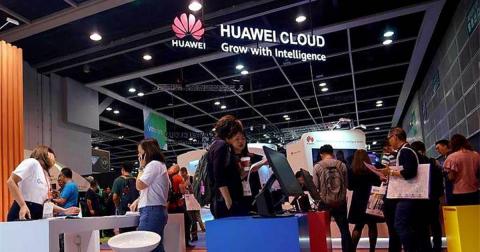
According to the latest report by the international research organization Counterpoint Research, the Chinese telecommunications giant (enterprise) Huawei’s inventory of high-end chips used to manufacture smartphones has been exhausted. With the chip supply being cut off by the United States, Huawei may be forced to withdraw from the global smartphone market. However, analysts say that Huawei has high resilience and has opened up new battlefields, deploying new businesses such as 5G cloud services and low-carbon energy. However, the part involving 5G network communications may still attract the attention of the United States and continue to suppress it.
Counterpoint Research, an international research organization, recently released a report saying that after checking and comparing sales data, it found that Huawei has run out of high-end chips designed by its IC factory HiSilicon.
Huawei's Kirin chip share is zero
According to the report, the share of HiSilicon-designed smartphone chips (Kirin series) in the global smartphone application market has slipped from 3% in the second quarter of last year to 0% in the third quarter of this year.
Restricted by the U.S. ban, Huawei’s advanced chip supply channels have been completely cut off, which means that high-end fabs including Taiwan’s TSMC and South Korea’s Samsung cannot continue to manufacture for them. Under this premise, Huawei’s high-end 5G mobile phones use The current Kirin chip may have become extinct.
Since Huawei and HiSilicon were included in the U.S. trade blacklist in 2019, they have urgently hoarded chips for more than a year, but after more than two years, the chip inventory will eventually run out one day.
During Huawei's struggling period, the market had expected and speculated about the comeback of Kirin chips, including the news that Huawei had broken through in November and had applied for a patent for a lithography machine for chip manufacturing, which is expected to break through the bottleneck of the United States, or Huawei SMIC's "chip stacking" patent allows SMIC's 14-nanometer mid-range process to achieve the performance of 7-nanometer chips, or earlier, the Dutch merchant ASML (ASML) reported that it had changed its mind and wanted to sell lithography machines to China.
However, analysts say that the chip and high-tech game between the United States and China has been raised to the level of national strategy, and it is by no means a single company that can reverse it. Therefore, the probability of Huawei successfully breaking through the US blockade in the mobile phone business is not high.
Dale Gai, director of semiconductor research at Counterpoint Research’s Taiwan office, responded to an interview with Voice of America by email, saying, “Based on the current restrictions on the import of high-tech equipment for wafer manufacturing (below 14nm), SMIC’s In the next few years, it is unlikely to establish enough advanced process chips to supply to Huawei. Regarding the possibility of ASML selling lithography machines to Chinese semiconductor factories, although we cannot speak on behalf of the company's executives, we believe that in the short term, the The company will abide by the regulations of the Bureau of Industry and Security of the U.S. Department of Commerce (the ban on sales to China) to protect the rights and interests of its shareholders.”
Li Chengdong, a Beijing-based electronics industry analyst and founder of Dolphin Think Tank, also said in an interview with Voice of America that it is difficult for Huawei to bypass US restrictions and find a stable source of chip supply. Moreover, Huawei is a brand that manufactures high-end, high-performance mobile phones. If it is forced to use SMIC's backward manufacturing process to build high-end mobile phones, it will actually damage the brand image.
Li Chengdong said: "(Huawei) making a fake 5G mobile phone in order to sell mobile phones is actually unnecessary. In particular, more than 80% of Chinese consumers use 5G mobile phones, but if you push a 4G mobile phone, consumers It’s actually not acceptable.”

